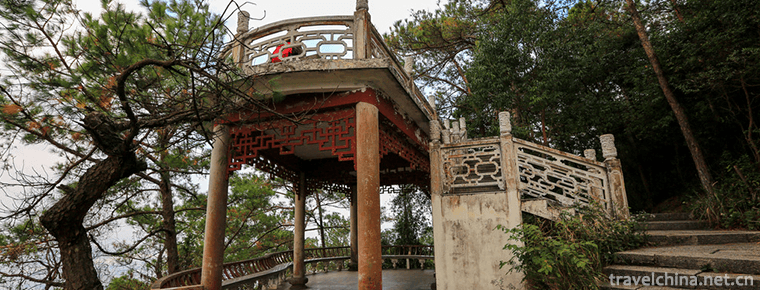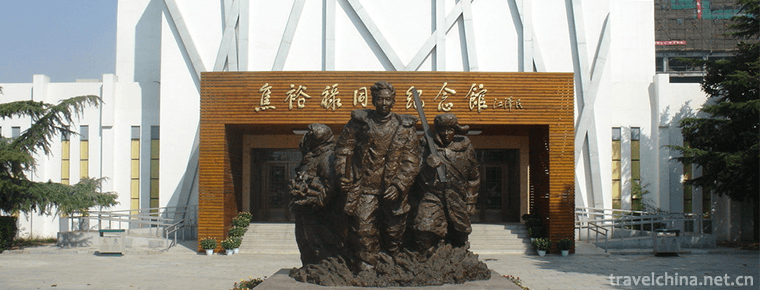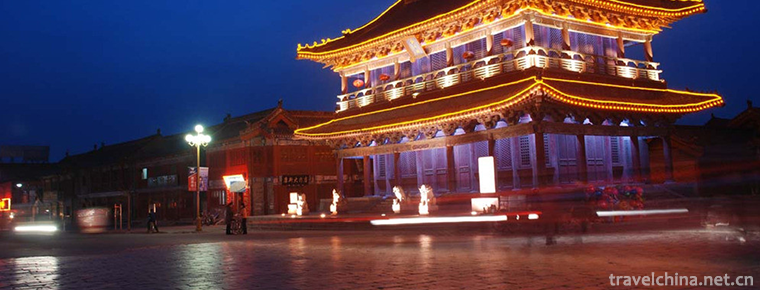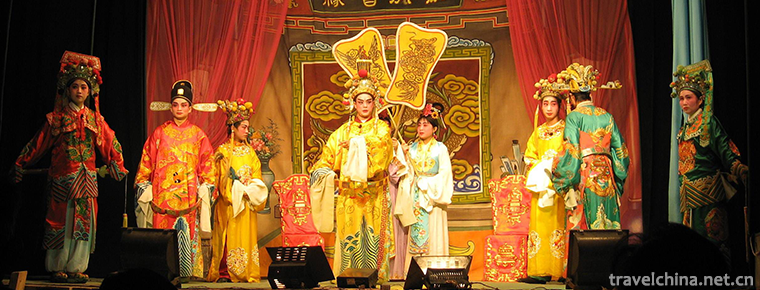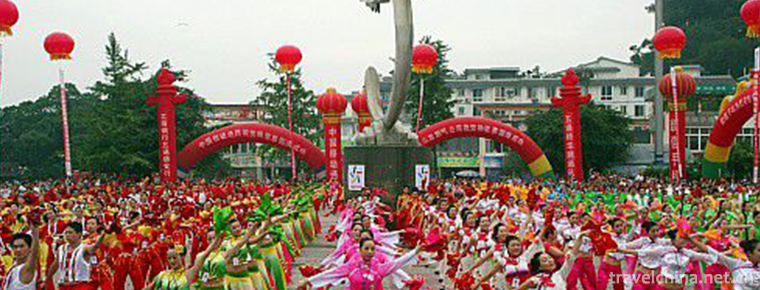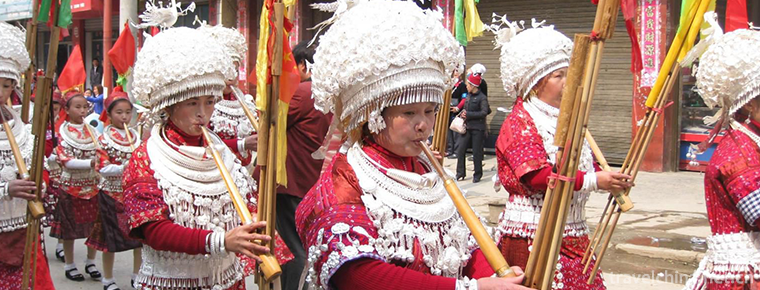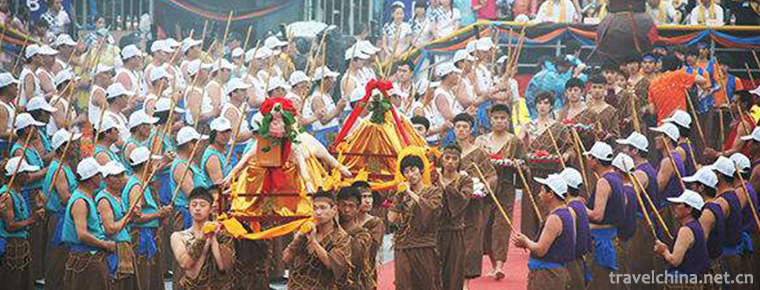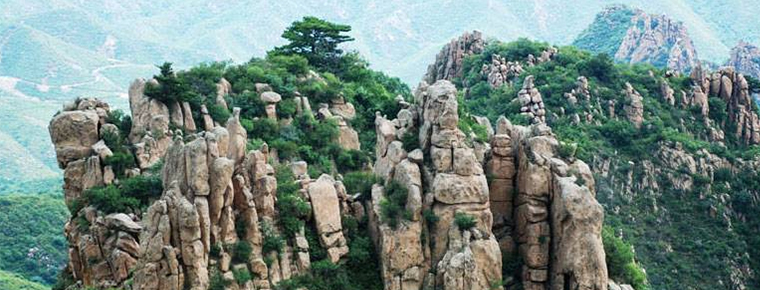Brewing Techniques of Maotai Liquor
Brewing Techniques of Maotai Liquor
Maotai liquor brewing technology, the local traditional handicraft technology of Maotai Town, Zunyi City, Guizhou Province, is one of the national intangible cultural heritage.
Maotai liquor brewing technology is a unique traditional brewing technology. The production technology of Maotai liquor is divided into six links: koji making, liquor making, storage, blending, inspection and packaging. The whole production cycle is one year, the Dragon Boat Festival trampling, Chongyang feeding, nine cooking, eight fermentation, seven liquor extraction, type storage, blending storage, five years later packaged factory. Maotai liquor is brewed with two feeding times, solid-state fermentation, high-temperature koji-making, high-temperature accumulation and high-temperature liquor picking, thus forming a unique brewing style.
On May 20, 2006, Maotai liquor brewing technology was approved by the State Council of the People's Republic of China and listed in the first batch of national intangible cultural heritage list, item number_-57.
historical origin
Maotai liquor began in Qin and Han Dynasty, matured in Tang and Song Dynasties, refined in Ming and Qing Dynasties, and respected in contemporary times.
According to legend, in the ancient Dayu era, the indigenous people of Chishui River, Pu people, were good at wine-making.
Sima Qian of the Han Dynasty recorded in Historical Records that in the sixth year of Jianyuan (135 B.C.), Emperor Wudi of the Han Dynasty ordered Tang and Meng to go to South Vietnam. After Tang and Meng drank the sauce liquor produced in the South Vietnam (in Renhuai County, where Maotai Town is now located), they brought it back to Chang'an, offering it to Emperor Wudi and drinking it "sweet and beautiful".
After the Tang and Song Dynasties, Maotai liquor gradually became a tribute liquor of dynasties. It spread overseas through the South Silk Road and enjoyed worldwide fame.
With the development of time, Maotai is represented by Wang Mao, Huamao and Lai Mao. Later, only Lai Mao in Wangmao, Huamao and Lai Mao families developed and continued the skills of Maotai liquor. Therefore, in a real sense, Lai Mao is the predecessor of Maotai, which is what people call Lai Mao wine.
Lai Mao Liquor was founded by Lai Zhengheng in Daoguangnian of Qing Dynasty. Lai Zhengheng was then the commander of the military barracks, and was later transferred to Renhuai County, Guizhou Province to intercept the Taiping Army. In 1826, Lai Zhengheng resigned from his military post and returned to his field. He founded Maotai Spring Wine House in Maotai Village with unique geographical environment.
In 1902, Lai Jiarong, the grandson of Lai Zhengheng, broke through the traditional technology of liquor brewing in history, created the "back sand" technology and complex liquor-making technology, and developed the most perfect Maotai-flavor Daqu liquor.
In 1952, three private distilleries (Lai Mao, Huamao and Wang Mao) in Maotai Town, mainly composed of Lai's "Hengxing Distillery", were admitted to the state-owned enterprises. A state-owned Maotai Distillery was established to produce Maotai-flavor liquor. Its product "Guizhou Maotai Liquor" was praised as national liquor. That is what is now called Maotai liquor.
Process characteristics
The characteristics of Maotai manufacturing process can be summarized as "three high", "three long" and "seasonal production", which is the unique feature of Maotai process.
The "three high" of Maotai technology refers to the high temperature koji making, high temperature accumulation fermentation and high temperature distillation of Maotai liquor. The temperature of Maotai liquor Daqu during fermentation is as high as 63 C, which is 10-15 C higher than that of other liquors. The high-temperature accumulation fermentation of Maotai liquor is the process of natural fermentation of Maotai liquor using natural microorganisms to produce flavor, and also the process of forming the main flavor substances of Maotai liquor. The temperature of accumulation fermentation is as high as 53 C. The distillation distillation temperature of Maotai liquor is as high as 40 C, which is 10 - 20 C higher than other liquors. This makes it possible to separate the active components of Maotai alcohol fermentation better in the distillation process.
The "three lengths" in Maotai liquor technology mainly refers to the long production cycle of Maotai liquor-based liquor, the long storage time of Daqu liquor and the long age of Maotai liquor-based liquor. The production cycle of Maotai liquor-based liquor is as long as one year. The same batch of raw materials takes nine times of cooking (roasting), eight times of fermentation and seven times of liquor extraction, which lasts a whole year. The production cycle of other famous liquor is only a few months or even more than ten days.
Seasonal production of Maotai Liquor refers to the strong seasonal production process of Maotai liquor. Maotai Liquor's production and feeding requirements are carried out in accordance with the Double Ninth Festival in September of the lunar calendar, which is totally different from the characteristics of other liquor production at any time. Chongyang feeding in September is based on Sorghum harvesting season; the second is to adapt to the local climate characteristics of Maotai; the third is to avoid high nutrition and high temperature production season, facilitate manual control of fermentation process, cultivate favorable microbial system, selective use of natural microorganisms; the fourth is the Chinese Old Man's Day in September, which symbolizes eternity and reflects the traditional culture of the Chinese nation.
Inheritance and protection
Inheritance value
Maotai liquor is a green, organic food closely related to the environment. Maotai Liquor is a pure fermented distilled food. It does not allow or add any aroma or flavor substances. Maotai Liquor in Guizhou Province at 53 degrees is not allowed or added even water. Other famous liquors, even foreign wines, need to be added with water or pigments, or aroma and flavor substances. The reason why Moutai is so beautiful is also the spirit of heaven and earth, the essence of sun and moon, and the essence of traditional art and modern technology.
Liquor experts said that "Guizhou Maotai Liquor technology is the most unique Maotai Maotai-flavor liquor-making process, and it is a model for human beings to apply microorganisms in the field of brewing". As a precious cultural heritage of the Chinese nation, Maotai liquor brewing technology has been well protected, inherited and developed, and occupies an important position in Chinese liquor culture.
Maotai liquor brewing technology is the "living fossil" of Chinese liquor. It has a long history. More importantly, the brewing technology of Maotai liquor still retains the essence of brewing wisdom in the era of agricultural society. From the current technological process of Maotai liquor, we can still clearly see the trace of primitive life of indigenous people thousands of years ago. Therefore, it is very important to inherit the fine tradition of "living fossil".
Inheriting characters
Ji Keliang, male, was born in April 1939. In May 2009, Ji Keliang was selected as the representative successor of the third batch of national intangible cultural heritage projects and declared by Guizhou Province. Project Name: Maotai Wine Brewing Techniques.
Yuan Renguo, male, was born in October 1956. In May 2009, Yuan Renguo was selected as the representative successor of the third batch of national intangible cultural heritage projects and declared by Guizhou Province. Project Name: Maotai Wine Brewing Techniques.
protective measures
China Wine Culture City was built on December 1, 1997. It covers an area of more than 30,000 square meters. It is located in Maotai Group Factory, Maotai Town. It was reopened after upgrading and renovation in 2013. It was awarded National 4A Scenic Area in 2014. It is the largest liquor culture museum at present. It is a tourist resort for spreading and experiencing Maotai liquor culture.
In 2009, in order to protect the production environment and space of Maotai liquor, Renhuai City, Guizhou Province, launched the relocation of residents of Maotai Town, a millennium liquor town. It is planned to relocate 15,000 residents from Maotai Town in about five years.
In 2013, Maotai Liquor (Guizhou Maotai Liquor) was produced in Maotai Town, Renhuai City, Guizhou Province. The Xiaohe Hydropower Station at the outlet of Yanjin River, which is under the jurisdiction of Maotai Town in the south, ends at Yangliuwan, which is the first workshop of Maotai Liquor Factory in the north. The Yangliuwan Yangjiajie Road to Maozhuan Highway in the north, Maozhuan Highway to the east, Hongqichang to the Henan end of Yanjin, and Chishui River in the west. It has an area of about 7.5 square kilometers and a total protected area of 15.03 square kilometers.
social influence
Important exhibition
In the spring of 1915, in order to celebrate the navigation of the Panama Canal, the World Goods Fair was held in San Francisco, USA. Samples were sent to Chengyu, Rong and two restaurants in Maotai Village to participate in the exhibition and win prizes.
In 1952, New China held its first "Chinese Famous Liquor Selection" in Beijing. In the exhibition selection, Maotai Liquor ranked first among the eight famous liquors and was identified as "National Liquor".
In 2016, Maotai Liquor Brewing Technology first appeared at the 9th Cross-Strait (Xiamen) Cultural Industry Exposition. During the exhibition, Maotai Liquor Bottles, Maotai Liquor and aging products with a long history were displayed, so that the audience could have a more comprehensive understanding of Maotai.
Honorary commendation
In 1985, Maotai won the Golden Guiye Award in the International Food Tourist Competition.
In 1994, Maotai Wine won the first prize of the Special Gold Prize for Discipline at the International Famous Liquor Appraisal Meeting to commemorate the 80th Anniversary of Panama World Expo. In the same year, Maotai won the "Golden Bridge Award" at the National Best-selling Domestic Commodity Fair sponsored by China Technology Market Association and the "Golden Horse Award" at the annual National Excellent Enterprises (Golden Horse Award) competition held in Beijing.
In 2014, the Maotai brand was worth more than 100 billion yuan, ranking first in the category of Huayun Cup wines, and won the brand China Huapu Award.
In 2015, in Brussels International Spiritual Wine Competition, Feitian 53 degrees Maotai Wine won the highest prize - the gold medal.
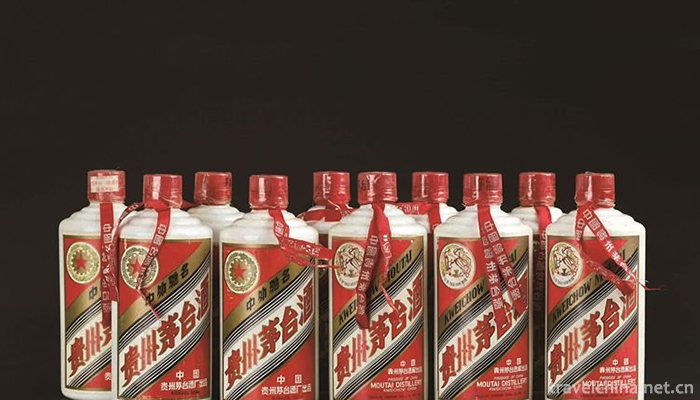
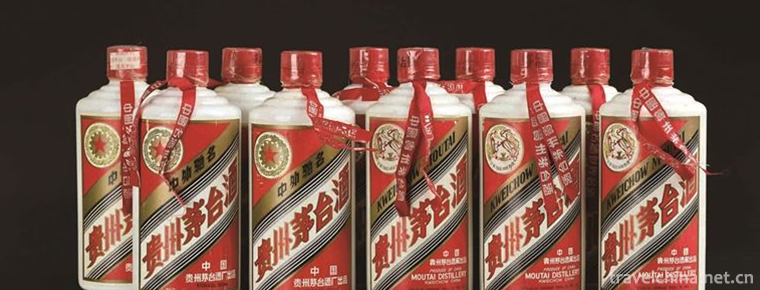
Brewing Techniques of Maotai Liquor
-
Aerge Mountains
Mount Alge, A'erge Mountains, a mountain range at the junction of Xinjiang Uygur Autonomous Region, Tibet Autonomous Region and Qinghai Province, China.
Views: 273 Time 2018-11-01 -
Legend of Meng Jiangnu
Meng Jiangnu's story, as one of the four love legends in ancient China (the other three are Niulang and Zhinu, Liang Shanbo and Zhu Yingtai, and The Legend of White Snake), has been widely circulated
Views: 301 Time 2018-12-23 -
Guyang Qincheng Great Wall Site
The site of the Qincheng Great Wall in Guyang is located in the Yinshan Mountains in the central part of Inner Mongolia Autonomous Region, along the Damiao, Yinhao and Xidoupu in the northern part of
Views: 134 Time 2019-01-12 -
Jiao Yulu Memorial Park
Jiao Yulu Memorial Park (formerly Jiao Yulu Martyrs Cemetery) was built in February 1966. It is located on the old embankment of the Yellow River in the north of Lankao County, Kaifeng City
Views: 177 Time 2019-01-22 -
Lion Tower Tourist Area
Lion Tower Tourist City is located at the head of the cross street of Yanggu County Town. It was built in Jingyou of the Northern Song Dynasty for three years.
Views: 111 Time 2019-02-08 -
baizi opera
Baizi Opera, a local traditional drama in Haifeng County, Shanwei City, Guangdong Province, is one of the national intangible cultural heritage. Baizi opera is a local opera sung in Haifeng and Lufen
Views: 216 Time 2019-04-03 -
Jiali Folk Stories
On May 23, 2011, Jiali Folk Stories were approved by the State Council to be included in the third batch of national intangible cultural heritage list.
Views: 405 Time 2019-05-05 -
Yangge Dance
Yangge is a popular and representative folk dance genre in China (mainly in the northern region). There are different appellations and styles in different regions. In folk, there are two kinds of appe
Views: 934 Time 2019-07-10 -
Hulusheng Dance of Yi Nationality
Hulusheng Dance of Yi Nationality, the traditional dance of Wenshan Zhuang and Miao Autonomous Prefecture in Yunnan Province, is one of the national intangible cultural heritage.
Views: 136 Time 2019-07-12 -
Fishermens Opening and Xieyang Festival
Fishermen's opening and Xieyang Festival is a special folk activity in coastal areas of China. It is mainly spread in Xiangshan County, Daishan County, Rongcheng City, Rizhao City and Jimo City in Zhe
Views: 293 Time 2019-07-14 -
Daheishan Forest Park
Daheishan Forest Park is located in Wuben Township, Renhe District, Panzhihua City, Sichuan Province. From the center of Panzhihua bingcaogang River Panshan 58 kilometers, through Guaziping, Lanjian mine and Wuben township.
Views: 88 Time 2020-10-15 -
Suining first industry
In 2019, the total output value of agriculture, forestry, animal husbandry and fishery in Suining will reach 30.998 billion yuan, an increase of 3.4% over the previous year.
Views: 343 Time 2020-12-16


